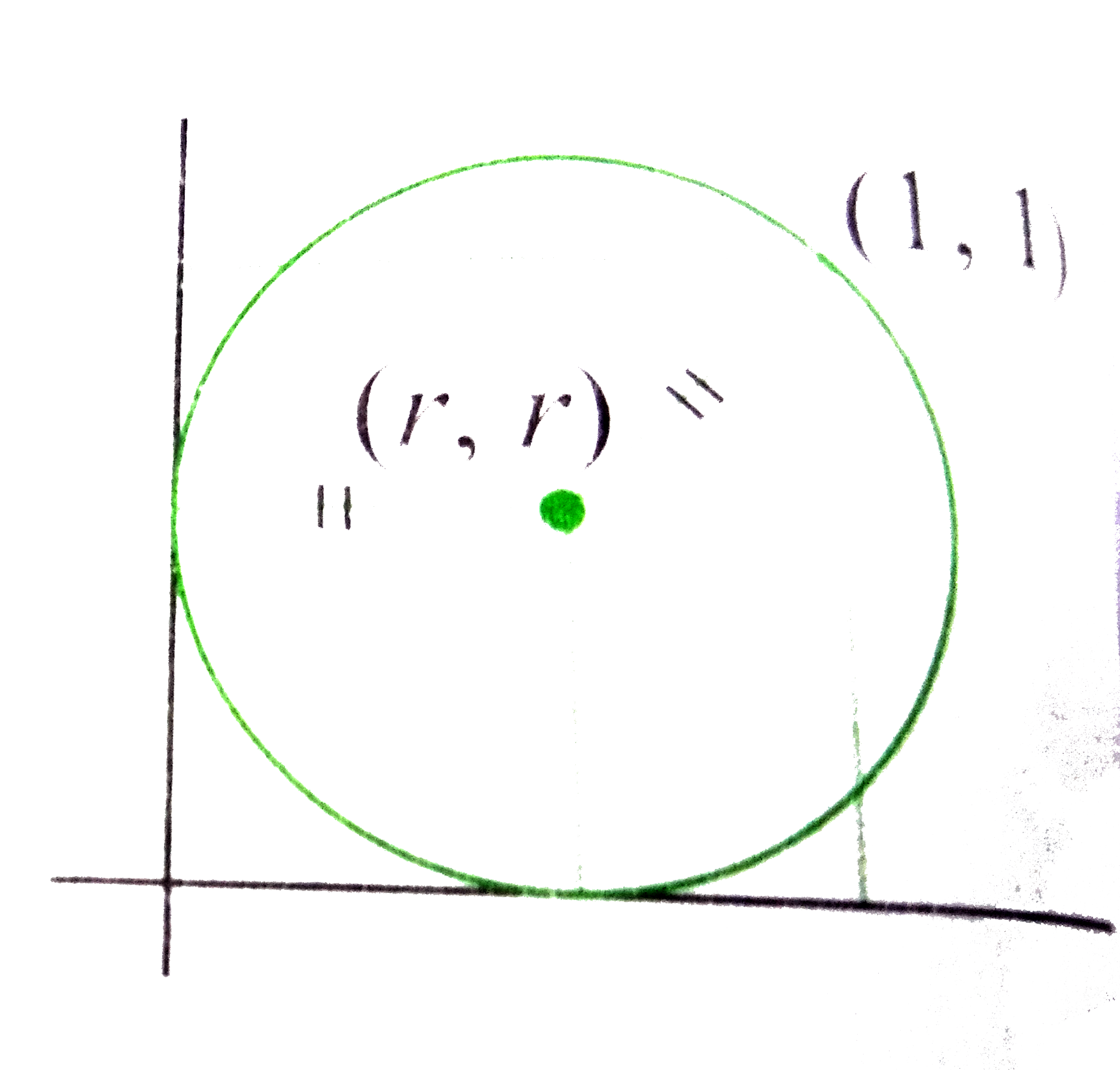ABCD is a square of unit area. A circle is tangent to two sides of ABCD and passes through exactly one of its vertices. The radius of the circle is a)2−√2 b) √2−1 c)1/2 d) 1√2Solution in Tamil
2−√2
√2−1
1/2
1√2
The correct Answer is:1
From the figure,
2(1−r)2=r2
or √2(1−r)=r
or r(√2+1)=√2
or r=√2√2+1=√2(√2−1)=2−√2

Topper's Solved these Questions
- CIRCLE BOOK - CENGAGECHAPTER - CIRCLE EXERCISE - Exercise (Multiple)
25 Videos
- CIRCLE BOOK - CENGAGECHAPTER - CIRCLE EXERCISE - Exercise (Comprehension)
46 Videos
- CIRCLE BOOK - CENGAGECHAPTER - CIRCLE EXERCISE - Exercise 4.6
5 Videos
- BINOMIAL THEOREMBOOK - CENGAGECHAPTER - BINOMIAL THEOREMEXERCISE - Comprehension
11 Videos
- CIRCLESBOOK - CENGAGECHAPTER - CIRCLESEXERCISE - Question Bank
16 Videos
Similar Questions
about to only mathematics
View SolutionEach side of a square is of length 6 units and the centre of the square Is ( - 1, 2). One of its diagonals is parallel to x+y=0. Find the co-ordinates of the vertices of the square.
View SolutionIf the circle x2+y2+2x+3y+1=0 cuts x2+y2+4x+3y+2=0 at AandB , then find the equation of the circle on AB as diameter.
View SolutionConsider a G.P. with first term (1+x)n, |x|<1, common ratio 1+x2 and number of terms (n+1). Let 'S' be sum of all the terms of the G.P., then
The coefficient of xn is 'S' is
View SolutionIf ax+by=10 is the chord of minimum length of the circle (x−10)2+(y−20)2=729 and the chord passes through (5,15) then the value of (4a+2b) is
View SolutionThe centre of a circle passing through (0,0),(1,0) and touching the Circle x^(2)+y^(2)=9 is a a ((1)/(2),sqrt(2)) b.((1)/(2),(3)/(sqrt(2))) c.((3)/(2),(1)/(sqrt(2))) d.((1)/(2),-(1)/(sqrt(2)))
View SolutionABCD is a square of unit area. A circle is tangent to two sides of ABCD and passes through exactly one of its vertices. The radius of the circle is 2−√2 (b) √2−1 1/2 (d) 1√2
View SolutionLet C be a circle with two diameters intersecting at an angle of 300. A circle S is tangent to both the diameters and to C and has radius unity. The largest radius of C is 1+√6+√2 (b) 1+√6−√2 √6+√2−11 (d) none of these
View SolutionThe line y=x is tangent at (0, 0) to a circle of radius 1. The centre of circle may be:
(a) (1√2,−1√2)
(b) (−12,12)
(c) (12,−12)
(d) (−1√2,1√2)
View SolutionLet C be the circle with centre (1,1) and radius 1.If T is the circle centered at (0,k) passing through origin and touching the circle C externally then the radius of T is equal to (a) √3√2 (b) √32 (c) 12 (d) 14
View SolutionA circle is circumscribed around a square as shown in the figure. The area of one of the four shaded portions is equal to 47 . The radius of the circle is (FIGURE) √2 (b) 1√2 (c) 2 (d) 3
View SolutionTangents drawn from (2,0) to the circle x2+y2=1 touch the circle at AandB. Then (A) A≡(12,√32), B -= (-1/2, - sqrt(3)/2)(B)A-= (- 1/2, (-sqrt(3)/2),B≡(12,√32) (C) A≡(12,√32), B-= (1/2, - sqrt(3)/2) (D) A≡(12,−√32),B≡(12,√32)
View SolutionIf a:b=c:d , then prove that (a+c):(b+d)=√a2−c2:√b2−d2
View SolutionIf : a=tanx,b=tany, c=√1+a2,d=√1+b2,then:cd⋅sin(x+y)= A)a−bB)a+bC)c−dD)c+d
View SolutionABCD is a square of unit area. A circle is tangent to two sides of ABCD and passes through exactly one of its vertices. The radius of the circle is (a) 2−√2 (b) √2−1 (c) √2−12 (d) 1√2
View SolutionLet C be a circle with two diameters intersecting at an angle of 300. A circle S is tangent to both the diameters and to C and has radius unity. The largest radius of C is (a) 1+√6+√2 (b) 1+√6−√2 (c) √6+√2−11 (d) none of these
View Solution
